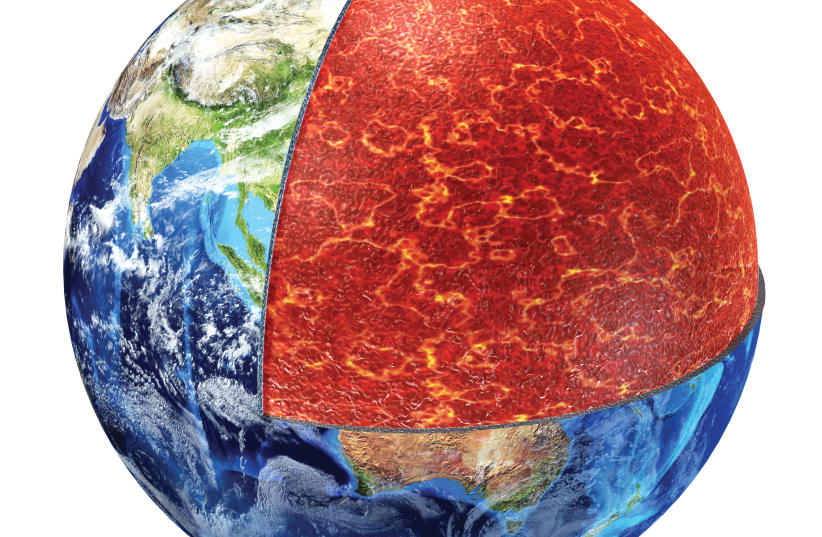Scientists have managed to uncover a previously undiscovered layer of partially molten rock beneath the Earth's crust, but it seemingly has nothing to do with the tectonic plate movements that cause earthquakes, according to a new study.
The findings of the study were published earlier this week in the peer-reviewed academic journal Nature Geoscience, and the revelations in it shed light on the current scientific understanding of just how tectonic plates move, which is what essentially causes earthquakes.
What are tectonic plates and how do they cause earthquakes?
Tectonic plates are what essentially form Earth's lithosphere, which is the hard and rocky shell of the Earth.
These plates all shift as the planet does, constantly moving them in different directions like an ever-changing puzzle.
When these plates move, it can cause the lithosphere to release energy, creating seismic waves. This results iin a spark of seismic activity, ranging from nothing perceivable to a mild rumble to an apocalyptic level of destruction that causes a wave of horrific catastrophe over a wide geographical area.
That's what an earthquake is.
But while we know that tectonic plates move, we aren't exactly sure how.
What is known is that it involves the asthenosphere. This is another region of the Earth's outer layers, located below the lithosphere in the upper mantle. In other words, the asthenosphere is located right under the Earth's tectonic plates.
Since the asthenosphere is very soft, tectonic plates are able to move through it. That much is understood. What isn't understood is why the asthenosphere is soft in the first place. In fact, how the asthenosphere formed at all isn't fully understood either.
There have been theories behind the layer's softness, the most prominent of which being that molten rocks may have been behind it. But that isn't actually true. In fact, this recent study confirmed as much, finding that molten rock content didn't have any discernable association with the flow of the mantle.
So what is behind the shifting plates?
According to the researchers behind the study, the answer seems to be not the molten-ness of molten rock but instead convection, meaning the process of how heat can move or transfer. But how can this be proven?
More information was needed, and the scientists decided to investigate, hypothesizing that perhaps there was a hidden pocket of molten rock in the asthenosphere that could prove this theory.
Noticing signs of partially molten rock while investigating seismic activity in Turkey, the researchers managed to put together a map of the asthenosphere thanks to data from seismic stations.
What they found was stunning: This was no mere anomalous pocket of molten rock beneath part of the asthenosphere. Rather, this hidden layer, dubbed PVG-150 (positive velocity gradient at 150 kilometers) seemed to be rather widespread, especially in parts of the mantle with high temperatures.
But that aside, what did this have to do with tectonic plates?
According to the study: Nothing.
The researchers looked at their map of the partially molten rock areas and compared it with data regarding tectonic plate movement. There was no correlation and seemingly no connection at all.
But what does this mean, aside from showing that we don't know as much as we thought we did about the asthenosphere or the origins and functions of tectonic plates?
Well, while it may still be a mystery, it still has contributed to our understanding of how it all works. Models of tectonic plates and the asthenosphere can be further refined now to better reflect this, which can also help progress more research.
Not only that, but it also can help scientists study other planets. Plenty of alien worlds throughout space have lithospheres of their own. Are their tectonic plates the same? What about the asthenospheres? Knowing more about Earth can help us learn more about planets throughout space, and vice versa.
Not only that, but knowing more about tectonic plates can help us learn more about earthquakes. These natural disasters can be incredibly destructive, as evidenced by the recent earthquake in Turkey and Syria that has left thousands dead and thousands more injured.
The more we learn about these natural processes, the better we can protect against them.

